13 Black And White Classics That Doubled The Fun When Colorized
Posted On: 24 Sep 2021 | Last Updated : 09 Mar 2022 | Views : 11.9k
Many Bollywood movies released in the black and white era were popular and successful that had repeat value and turned classics over a period of time. These black and white classics became landmark movies because of their content, performances, direction, and music. It was only years later when Bollywood tried to come up with remakes of which some succeeded while many failed. In order to preserve these black and white movies in their original vision, the realistic ideation of colorization was thought upon. The possibility of adding a range of real or digital pigments to monochromatic pictures has worked to a large extent making viewing enjoyable, especially for today’s generation. This is perhaps the very reason that our filmmakers have digitally restored and colorized some of its timeless black and white classics for the younger generation to watch and enjoy. Here are some popular Bollywood’s old classics which were digitally colorized and re-released in theatres and other streaming platforms.
1. Boot Polish (1954)
Raj Kapoor’s black and white classic Boot Polish directed by Prakash Arora was transformed into colour. The story was that of an innocent pair of a brother and sister played by Ratan Kumar and Kumari Naaz, respectively who are abandoned by their father after their mother’s death and take to the streets to make a living by polishing people’s shoes. The movie which also starred David had some hummable songs by Shankar-Jaikishan while the film went on to win Filmfare Awards for Best Cinematographer, Best Film, and Best Supporting Actor.
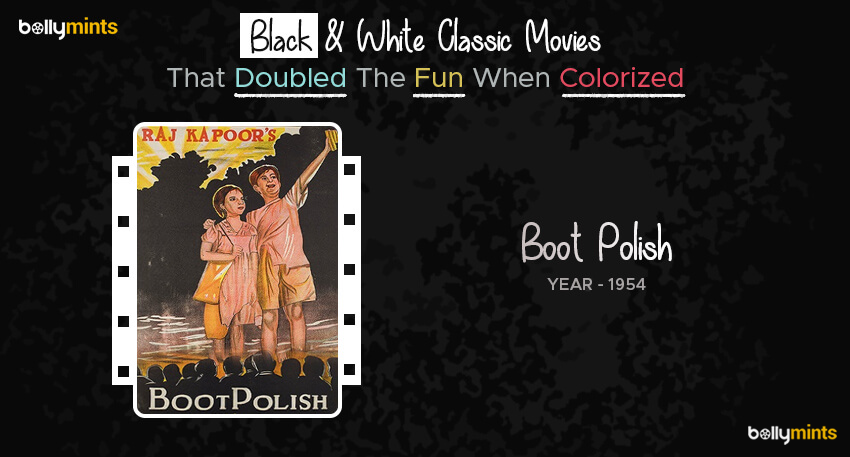
2. Shree 420 (1955)
Mention top black and white classic movies which re-released in colour and you have Raj Kapoor’s Shree 420. Originally released in 1955, Shree 420 was the story of a young educated man who comes to a big town to make it big but gets caught in the web of a rich man until he decides to get even with him. Studded with gems by Shankar – Jaikishan, the movie had some memorable performances by Raj Kapoor himself, Nargis, Nadira, and Lalita Pawar. If you haven’t seen it in black and white then watching it in colour is an experience by itself.
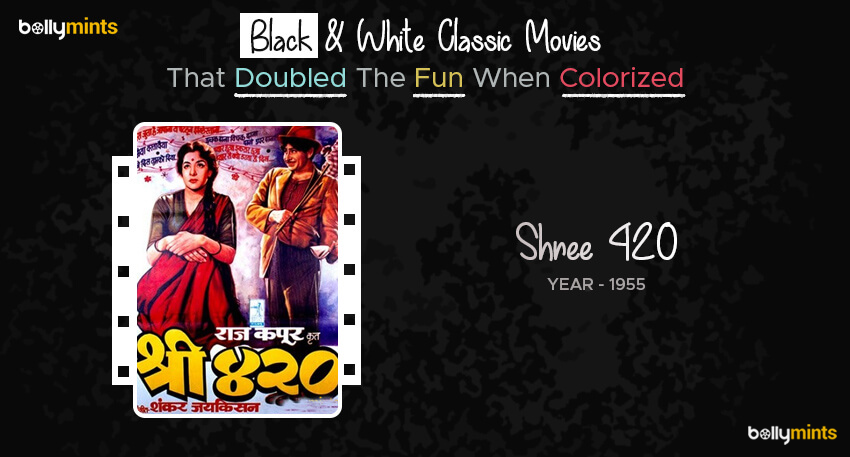
3. Chori Chori (1956)
If at all there was a Raj Kapoor – Nargis film that deserved to be released in colour it had to be Chori Chori directed by Anant Thakur. This was probably the most popular film of the hit pair which wasn’t produced under the RK Films banner. Initially, only three songs from this film were colorized and later released the full film on some of the streaming sites in a colorized version. A remake of the Hollywood hit film It Happened One Night, Chori Chori had some memorable songs from the baton of Shankar-Jaikishan which refuses to grow old even after so many years of its release.
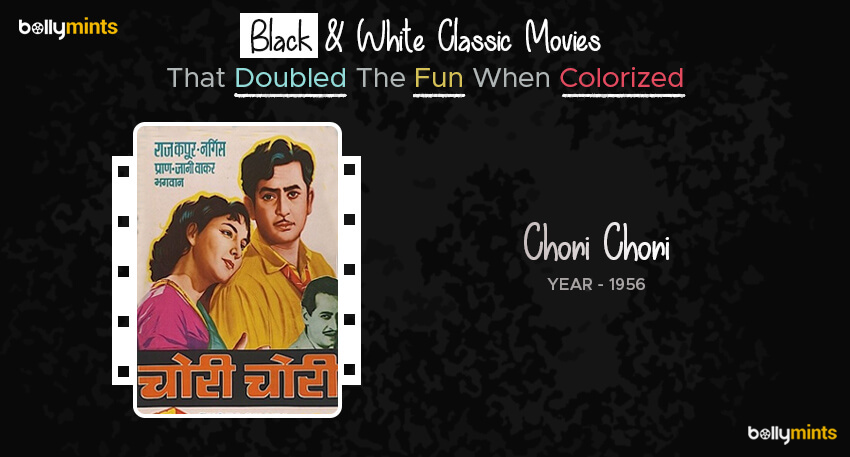
4. Naya Daur (1957)
B.R. Chopra’s evergreen classic Naya Daur is also among black and white Bollywood movies that re-released in colour. The movie which starred Dilip Kumar, Vyjayanthimala, Johnny Walker, Jeevan, and Ajit was a runaway hit when released in 1957. The film was based on the Man vs Machine theme with glittering performances by all the lead actors. The songs by O.P. Nayyar were all chartbusters and continues to be a part of many playlists. The movie’s colorized version which was released in 2007 failed to recreate the magic of the original.
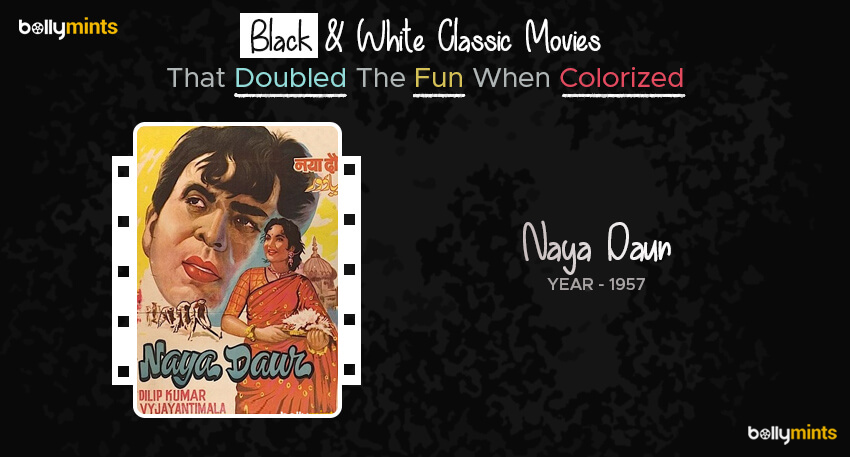
5. Pyaasa (1957)
Guru Dutt’s black and white film Pyaasa which is considered Hindi cinema’s all-time classic deservedly got a colorized version for itself. Rated among one of his best works to date, Pyaasa was the story of a struggling poet who faces constant rejection till people get to know about his talent. Starring Guru Dutt, Mala Sinha, Waheeda Rehman, and Rehman in the lead roles, the film is a cult classic and worth a watch.
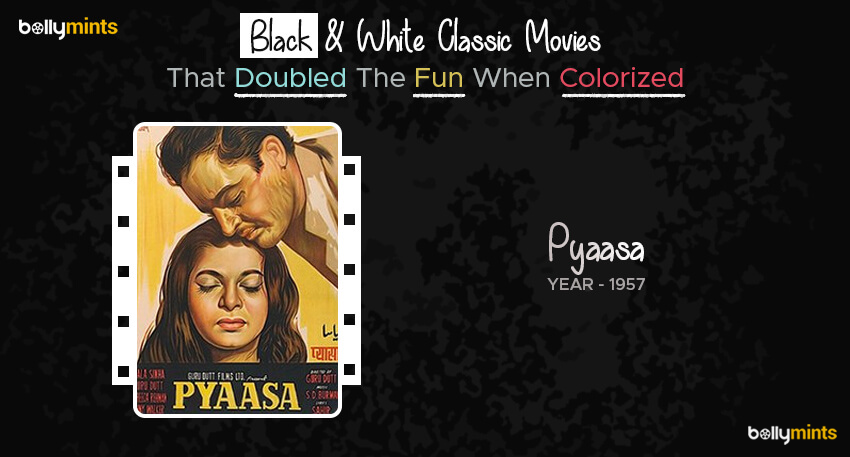
6. Howrah Bridge (1958)
Shakti Samanta’s black and white classic crime thriller Howrah Bridge starring Ashok Kumar, Madhubala, K.N. Singh, Om Prakash, and Helen also was colorized and released. The movie which had O.P. Nayyar’s evergreen chartbusters like ‘Mera Naam Chin Chin Chu’, ‘Aaiye Meherbaan’, ‘Dekhke Teri Nazar Bekarar Ho Gaye’, and ‘Eent Ki Dukki, Paan Ka Ikka’ were simply mesmerizing. In case you are a crime thriller genre fan and yet to watch Howrah Bridge then this classic is unmissable.
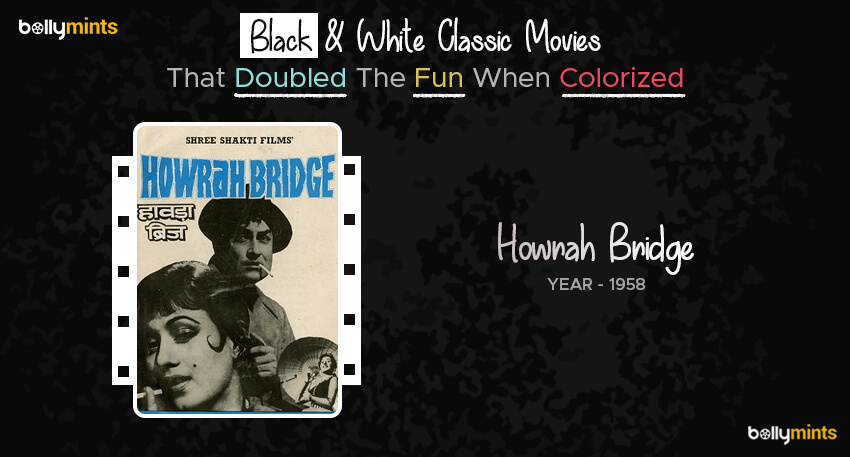
7. Chalti Ka Naam Gaadi (1958)
Satyen Bose’s Chalti Ka Naam Gaadi was made to order to be transformed in colour. The black and white classic comedy looks as fresh as ever whenever one watches it on any of the streaming sites. This was the second time that the Ganguly brothers shared screen space in a movie after Bandi in 1957. Besides having an amazing screenplay, the comedy-drama also had some unforgettable songs composed by S.D. Burman and lyrics by Majrooh.
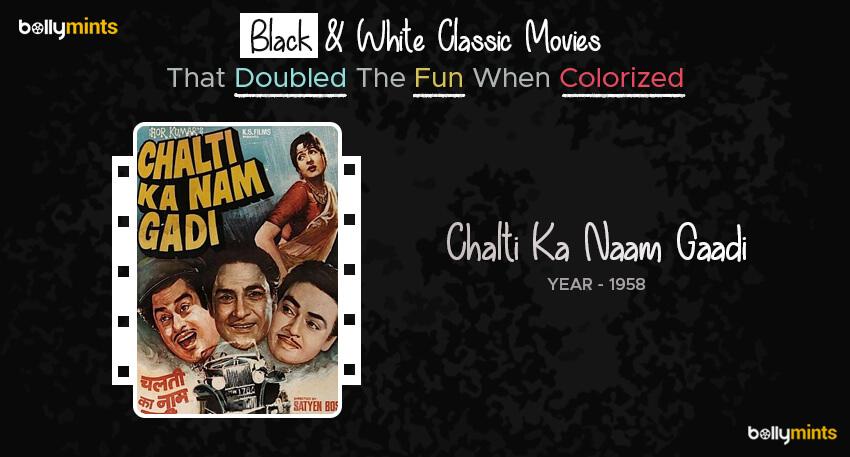
8. Kala Pani (1958)
Kala Pani was yet another black and white crime thriller classic film that was directed by Raj Khosla and produced by Dev Anand. Based on A.J. Cronin's 1953 novel 'Beyond This Place', Kala Pani was the story of a young man in search of the real murderer due to whom his father was falsely implicated. Music by S.D. Burman, and lyrics by Majrooh Sultanpuri added sheen to the narration. The movie not only reportedly implied a ban on Dev Anand from wearing black suits on screen but also fetching him that year’s Filmfare Award for 'Best Actor'.
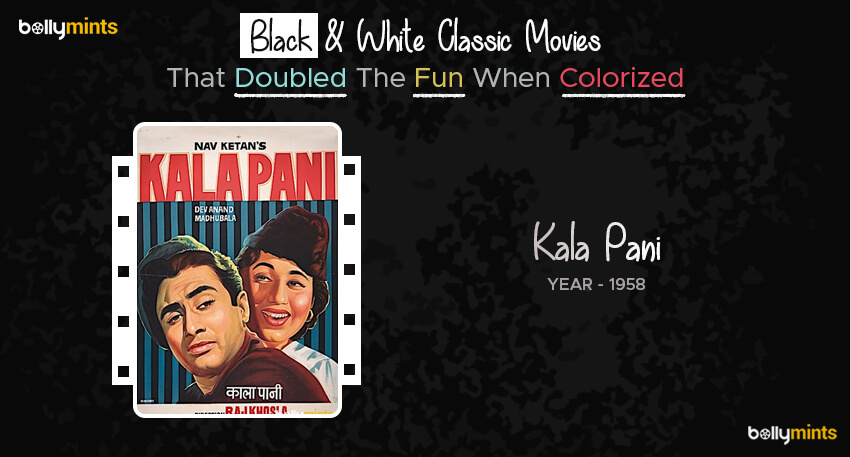
9. Mughal-E-Azam (1960)
K. Asif’s Mughal-E-Azam was the first Bollywood black and white movie to be colorized and re-released in 2004. The epic period costume war drama which was long in the making and one of Bollywood's longest-running movies in theaters was originally released in 1960 and based on the famous romance of Salim and Anarkali. The magnum opus starring Dilip Kumar, Madhubala, Prithviraj Kapoor, Durga Khote, Nigar Sultana, and Ajit broke all existing box-office records to become a milestone in the history of Indian cinema. When re-released in 2004, Mughal-E-Azam found limited audiences in the theatres but the DVD became a collection for many movie lovers.
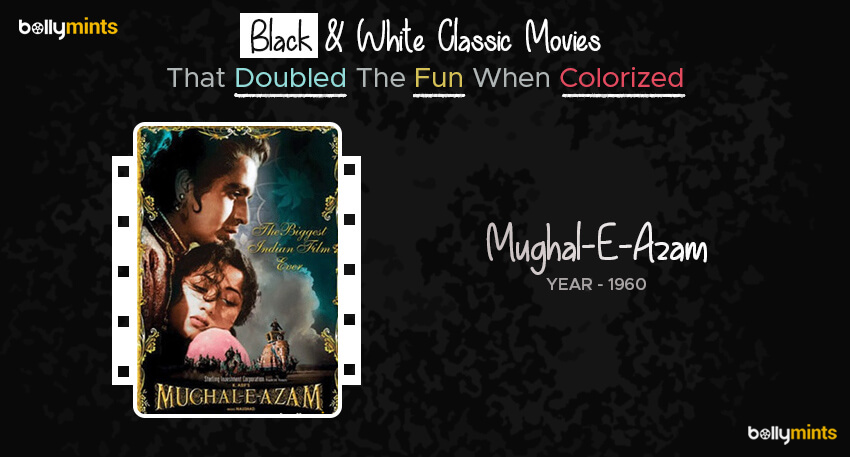
10. Hum Dono (1961)
Dev Anand’s Hum Dono features among the top 10 black and white classics which re-released in colour. Hum Dono saw Dev Anand playing a double role that of Mahesh & Major Verma where both are in the army. Major Verma goes missing during World War II and is believed to be dead. Mahesh goes to the Major’s house to break the news but his family mistakes him for being Major Verma. The film was originally released in 1961 and 50 years thereafter it was released as Hum Dono Rangeen in 2011 which was digitally restored and colorized in cinemascope. The film finally met with a lukewarm response at the ticket windows.
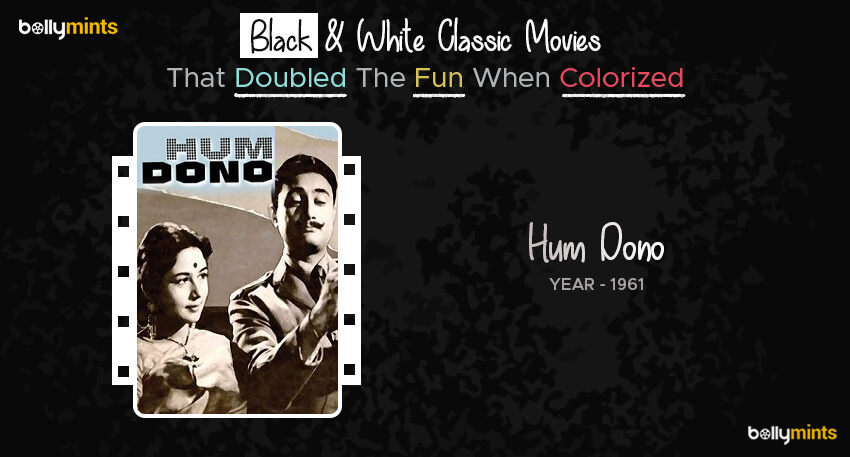
11. Half Ticket (1962)
Listed among Indian Expresses ‘10 Bollywood comedies to watch in your lifetime’, Half Ticket is a romantic comedy directed by Kalidas starring Madhubala, Kishore Kumar, Manorama, and Pran. A ‘chase’ film, Half Ticket doesn’t have a single dull moment with Kishore Kumar and his antics singing away ‘Aake Seedhi Lagi Dil Pe’ in the male as well as female voices. Watching the colourised version of the film will double the enjoyment if you haven’t watched it yet.
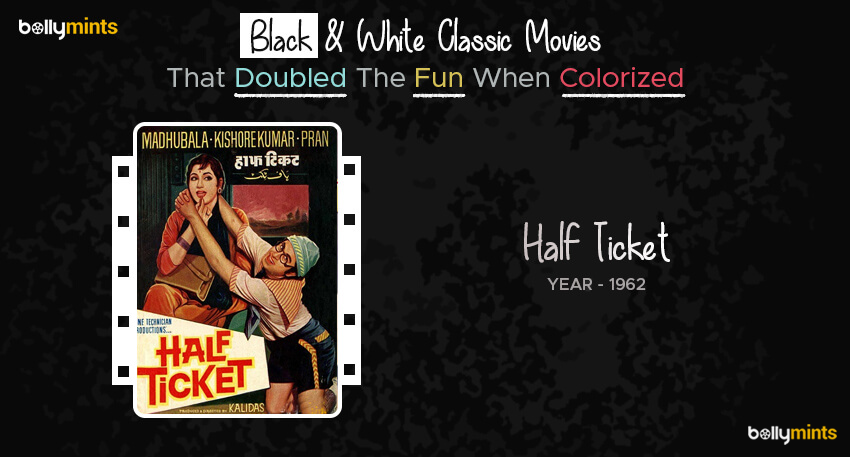
12. Dil Tera Deewana (1962)
Dil Tera Deewana a romantic comedy starring Shammi Kapoor, Mala Sinha, Mehmood, Shubha Khote, Om Prakash, and Pran was a laugh riot directed by B.R. Panthulu. The story was about Mohan (Shammi Kapoor) who is sent by his father to an ex-army officer’s house to make him a disciplinarian. In order to avoid the change, he makes his friend Anokhe (Mehmood) switch places with him. The songs composed by Shankar-Jaikishan were one better than the other. In case you have seen it in monochrome watching it again in colour won’t do any harm for sure.
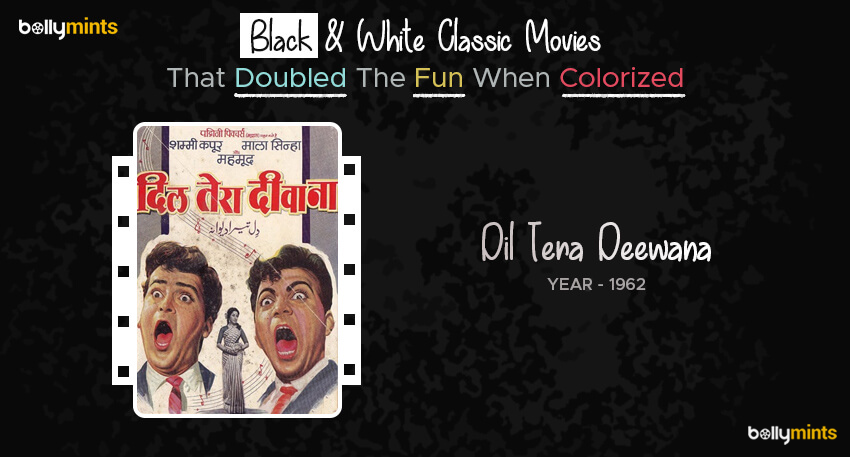
13. Sahib Bibi Aur Ghulam (1962)
Director Abrar Alvi’s black and white classic Sahib Bibi Aur Ghulam released in 1962 was based on Bimal Mitra's Bengali-language novel Saheb Bibi Golam (1953). Starring Guru Dutt, Meena Kumari, Rehman, and Waheeda Rehman, the film was made to cover the losses incurred by the failure of Kaagaz Ke Phool (1959). Though many felt that the monochrome version created a better ambiance of the colonial rule era in the film but the colorised version was released keeping the younger generation in mind.



